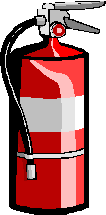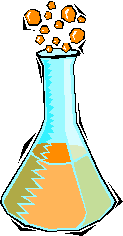

Lethal Nerve Agent (VX)
Date: 14 September 1988
Revised: 29 September 1999

In the event of an emergency:
Telephone the SBCCOM Operations
Center's 24-hour emergency
Number: 410-436-2148
Section I - General Information

Manufacturer's Address:
U.S. Army Soldier and Biological Chemical Command (SBCCOM)
Edgewood Chemical Biological Center (ECBC)
ATTN: AMSSB-RCB-RS
Aberdeen Proving Ground, MD 21010-5424
CAS Registry Numbers:
50782-69-9, 51848-47-6, 53800-40-1, 70938-84-0
Chemical Name:
O-ethyl-S-(2-iisopropylaminoethyl) methylphosphonothiolate
Trade Name And Synonyms:
Phosphonothioic acid, methyl-, S-(2-bis(1-methylethylamino)ethyl) 0-ethyl ester
O-ethyl S-(2-diisopropylaminoethyl) methylphosphonothiolate
S-2-Diisopropylaminoethyl O-ethyl methylphosphonothioate
S-2((2-Diisopropylamino)ethyl) O-ethyl methylphosphonothiolate
O-ethyl S-(2-diisopropylaminoethyl) methylphosphonothioate
O-ethyl S-(2-diisopropylaminoethyl) methylthiolphosphonoate
S-(2-diisopropylaminoethyl) o-ethyl methyl phosphonothiolate
Ethyl-S-dimethylaminoethyl methylphosphonothiolate VX
EA 1701
TX60
Chemical Family: Sulfonated organophosphorous compound
Formula/Chemical Structure:
C11 H26 N O2 P S
CH3 0 CH(CH3)2
\|| /
P - S - CH2CH2 - N
/ \
CH3CH2O CH(CH3)2
NFPA 704 Signal:

Health - 4
Flammability - 1
Reactivity - 1
Special - 0
Section II - Ingredients

Ingredients/Name: VX
Percentage by Weight: 100%
Threshold Limit Value (TLV): 0.00001mg/m3
Section III - Physical Data

Boiling Point @ 760 mm Hg: 568 oF (298 oC)
Vapor Pressure: 0.00063 mm Hg @ 25 oC
Vapor Density (Air = 1 STP): 9.2 @ 25 °C
Solubility (g/100g solvent): 5.0 @ 21.5 °C and
3.0 @ 25 oC in water. Soluble in organic solvents.
Specific Gravity (H20=1g/mL@25 oC): 1.0113
Freezing/Melting Point (oC): -50 oC
Liquid Density: 1.0083 g/mL@25 oC
Volatility: 8.9 mg/m3 @ 25 oC
Viscosity (CENTISTOKES): 9.958 @ 25 oC
Appearance and Odor: Colorless to straw colored liquid and oderless,
similar in appearance to motor oil.
Section IV - Fire and Explosion Data

Flashpoint: 159 oC (McCutchan - Young)
Flammability Limits (% By Volume): Not Available
Lower Explosive Limit: Not Applicable.

Upper Explosive Limit: Not Applicable
Extinguishing Media: Water mist, fog, foam, CO2. Avoid
using extinguishing methods that will cause splashing or spreading of the VX.
Special Fire Fighting Procedures: All persons not engaged in
extinguishing the fire should be immediately evacuated from the area. Fires
involving VX should be contained to prevent contamination to uncontrolled areas.
When responding to a fire alarm in buildings or areas containing VX, fire
fighting personnel should wear full firefighter protective clothing during
chemical agent firefighting and fire rescue operations. Respiratory protection
is required. Positive pressure, full face piece, NIOSH-approved self-contained
breathing apparatus (SCBA) will be worn where there is danger of oxygen deficiency and when directed by the fire chief or chemical accident/incident (CAI) operations officer. In cases where firefighters are responding to a chemical accident/incident for rescue/reconnaissance purposes they will wear appropriate levels of protective clothing (See Section VIII). Do not breathe fumes. Skin contact with nerve agents must be avoided at all times. Although the fire may destroy most of the agent, care must still be taken to assure the agent or contaminated liquids do not further contaminate other areas or sewers. Contact with liquid VX or vapors can be fatal.
Unusual Fire And Explosion Hazards: None known.
Section V - Health Hazard Data

Airborne Exposure Limits (AEL): The permissible airborne exposure concentration for VX for an 8-hour workday of a 40-hour work week is an 8-hour time weighted average (TWA) of 0.00001 mg/m3. This value can be
found in "DA Pam 40-8, Occupational Health Guidelines for the Evaluation and
Control of Occupational Exposure to Nerve Agents GA, GB, GD, and VX." To date,
however, the Occupational Safety and Health Administration (OSHA) has not
promulgated a permissible exposure concentration for VX.
VX is not listed by the International Agency for Research on Cancer (IARC),
American Conference of Governmental Industrial Hygienists (ACGIH), Occupational
Safety and Health Administration (OSHA), or National Toxicology Program (NTP) as a carcinogen.
Effects of Overexposure: VX is a lethal cholinesterase inhibitor.
Doses which are potentially life-threatening may be only slightly larger than
those producing least effects. Death usually occurs within 15 minutes after
absorption of a fatal dosage.
Effective dosages for vapor are estimated for exposure durations of 2-10 minutes.
Symptoms of overexposure may occur within minutes or hours, depending upon
the dose. They include: miosis (constriction of pupils) and visual effects,
headaches and pressure sensation, runny nose and nasal congestion, salivation,
tightness in the chest, nausea, vomiting, giddiness, anxiety, difficulty in
thinking, difficulty sleeping, nightmares, muscle twitches, tremors, weakness,
abdominal cramps, diarrhea, involuntary urination and defecation. With severe
exposure symptoms progress to convulsions and respiratory failure.
Emergency and First Aid Procedures:

Inhalation: Hold breath until respiratory protective mask is donned.
If severe signs of agent exposure appear (chest tightens, pupil constriction,
incoordination, etc.), immediately administer, in rapid succession, all three
Nerve Agent Antidote Kit(s), Mark I injectors (or atropine if directed by a
physician). Injections using the Mark I kit injectors may be repeated
at 5 to 20 minute intervals if signs and symptoms are progressing until three
series of injections have been administered. No more injections will be given
unless directed by medical personnel. In addition, a record will be maintained
of all injections given. If breathing has stopped, give artificial respiration.
Mouth-to-mouth resuscitation should be used when mask-bag or oxygen delivery'systems are not available. Do not use mouth-to-mouth resuscitation when facial
contamination exists. If breathing is difficult, administer oxygen. Seek
medical attention Immediately.
Eye Contact: Immediately flush eyes with water for 10-15
minutes, then don respiratory protective mask. Although miosis (pinpointing of
the pupils) may be an early sign of agent exposure, an injection will not be
administered when miosis is the only sign present. Instead, the individual will
be taken Immediately to a medical treatment facility for observation.
Skin Contact: Don respiratory protective mask and remove contaminated clothing. Immediately wash contaminated skin with copious amounts of soap and water, 10% sodium carbonate solution, or 5% liquid household bleach. Rinse well with water to remove excess decontaminant. Administer nerve agent antidote kit, Mark I, only if local sweating and muscular twitching symptoms are observed. Seek medical attention Immediately.
Ingestion: Do not induce vomiting. First symptoms are likely to be gastrointestinal. Immediately administer Nerve Agent Antidote Kit, Mark I. Seek medical attention Immediately.
Section VI - Reactivity Data

Stability:
 Relatively stable at room temperature. Unstabilized VX of
95% purity decomposes at a rate of 5% a month at 71 °C.
Relatively stable at room temperature. Unstabilized VX of
95% purity decomposes at a rate of 5% a month at 71 °C.
Incompatibility: Negligible on brass, steel, and aluminum.
Hazardous Decomposition Products: During a basic hydrolysis of VX up
to 10% of the agent is converted to diisopropylaminoethyl methylphosphonothioic
acid (EA2192). Based on the concentration of EA2192 expected to be formed during hydrolysis and its toxicity (1.4 mg/kg dermal in rabbit at 24 hours in a 10/90 wt.% ethanol/water solution), a Class B poison would result. The large scale decon procedure, which uses both Hth and NaOH, destroys VX by oxidation and hydrolysis. Typically the large scale product contains 0.2 - 0.4 wt.%
EA2192 at 24 hours. At pH 12, the EA2192 in the large scale product has a half-life of about 14 days. Thus, the 90-day holding period at pH 12 results in about a 64-fold reduction of EA2192 (six half-lives). This holding period is sufficient to reduce the toxicity of the product below that of a Class B poison. Other less toxic products are ethyl methylphosphonic acid, methylphosphinic acid, diisopropyaminoethyl mercaptan, diethyl methylphosphonate, and ethanol.
The small scale decontamination procedure uses sufficient Hth to oxidize all VX
thus no EA2192 is formed.
Hazardous Polymerization: Does not occur.
Section VII - Spill, Leak, And Disposal Procedures

Steps To Be Taken In Case Material Is Released Or Spilled:
If leaks or spills of VX occur, only personnel in full protective clothing
(See Section VIII ) will remain in the area. In case of personnel contamination
see Section V for emergency and first aid instructions.
Recommended Field Procedures (For Quantities Greater Than 50 Grams):
Note: These procedures can only be used with the approval of the Risk
Manager or qualified safety professionals). Spills must be contained by
covering with vermiculite, diatomaceous earth, clay or fine sand. An alcoholic
Hth mixture is prepared by adding 100 milliliters of denatured ethanol to a
900-milliliter slurry of 10% Hth in water. This mixture should be made just before use since the Hth can react with the ethanol. Fourteen grams of alcoholic Hth solution are used for each gram of VX. Agitate the decontamination mixture as the VX is added. Continue the agitation for a minimum of one hour. This reaction is reasonably exothermic and evolves substantial off gassing. The evolved reaction gases should be routed through a decontaminate filled scrubber before release through filtration systems. After completion of the one hour minimum agitation, 10% sodium hydroxide is added in a quantity equal to that necessary to assure that a pH of 12.5 is maintained for a period not less than 24 hours. Hold the material at a pH between 10 and 12 for a period not less than 90 days to ensure that a hazardous intermediate material is not formed (See Section VI). Scoop up all material and place in a DOT approved container. Cover the contents of the with decontaminating solution as above. After sealing the exterior, decontaminate and label according to EPA and DOT regulations. All leaking containers will be over packed with sorbent (e.g., vermiculite) placed between the interior and exterior containers. Decontaminate and label according to EPA and DOT regulations. Dispose of decontaminant according to Federal, state, and local laws. Conduct general area monitoring to confirm that the atmospheric concentrations do not exceed the
airborne exposure limits (See Sections II and VIII).
If the alcoholic Hth mixture is not available, then the following decontaminants may be used instead and are listed in the order of preference: Decontaminating Agent (DS2), Supertropical Bleach Slurry (STB), and Sodium Hypochlorite.
Recommended Laboratory Procedures (For Quantities Less Than 50 Grams):
 If the active chlorine of the Calcium Hypochlorite (HTH) is at least 55%, then 80 grams of a 10% slurry are required for each gram of VX. Proportionally more Hth is required if the chlorine activity of the Hth is lower than 55%. The mixture is agitated as the VX is added and the agitation is maintained for a minimum of one hour. If phasing of the VX/decon solution continues after 5 minutes, an amount of denatured ethanol equal to a 10 wt.% of the total agent/decon will be added to help miscibility. Place all material in a DOT
approved container. Cover the contents with decontaminating solution as above.
After sealing, decontaminate the exterior of the container and label according
to EPA and DOT regulations. All leaking containers will be over packed with sorbent placed between the interior and exterior containers. Decontaminate and label according to EPA and DOT regulations. Dispose of according to Federal, State, and local laws. Conduct general area monitoring to confirm that the atmospheric concentrations do not exceed the airborne exposure limits
(See Sections II and VIII).
If the active chlorine of the Calcium Hypochlorite (HTH) is at least 55%, then 80 grams of a 10% slurry are required for each gram of VX. Proportionally more Hth is required if the chlorine activity of the Hth is lower than 55%. The mixture is agitated as the VX is added and the agitation is maintained for a minimum of one hour. If phasing of the VX/decon solution continues after 5 minutes, an amount of denatured ethanol equal to a 10 wt.% of the total agent/decon will be added to help miscibility. Place all material in a DOT
approved container. Cover the contents with decontaminating solution as above.
After sealing, decontaminate the exterior of the container and label according
to EPA and DOT regulations. All leaking containers will be over packed with sorbent placed between the interior and exterior containers. Decontaminate and label according to EPA and DOT regulations. Dispose of according to Federal, State, and local laws. Conduct general area monitoring to confirm that the atmospheric concentrations do not exceed the airborne exposure limits
(See Sections II and VIII).
Note: Ethanol should be reduced to prevent the formation of a
hazardous waste.
Upon completion of the one hour agitation the decon mixture will be adjusted
to a pH between 10 and 11. Conduct general area monitoring to confirm that the atmospheric concentrations do not exceed the airborne exposure limits (See Sections II and VIII).
Waste Disposal Method: Open pit burning or burying of VX or items
containing or contaminated with VX in any quantity is prohibited. The
detoxified VX(using procedures above) can be thermally destroyed by in a EPA approved incinerator according to appropriate provisions of Federal, State, or
local Resource Conservation and Recovery Act (RCRA) regulations.
Note: Some decontaminate solutions are hazardous waste according to
RCRA regulations and must be disposed of according to those regulations.
Section VIII - Special Protection Information

Respiratory Protection
| Our retail division, Safety Emporium, carries a complete line of powered air-purifying respirators (PAPR's) rated for use with VX and other nuclear/chemical/biological (NBC) agents. |
Ventilation: Local exhaust: Mandatory. Must be filtered or scrubbed
to limit exit concentrations to <0.00001 mg/m3. Air emissions
will meet local, state, and federal regulations.
Special: Chemical laboratory hoods will have an average inward face velocity of 100 linear feet per minute (lfpm) ±20% with the velocity at any point not deviating from the average face velocity by more than 20%. Existing laboratory hoods will have an inward face velocity of 150 lfpm ±20%. Laboratory hoods will be located such that cross-drafts do not exceed 20% of the inward face velocity. A visual performance test using smoke-producing devices will be performed in assessing the ability of the hood to contain agent VX.
Other: Recirculation or exhaust air from chemical areas is prohibited.
No connection between chemical areas and other areas through ventilation system
is permitted. Emergency backup power is necessary. Hoods should be tested at
least semiannually or after modification or maintenance operations. Operations
should be performed 20 centimeters inside hood face.
Protective Gloves: Butyl Rubber Glove M3 and M4 Norton, Chemical Protective Glove Set
Eye Protection: At a minimum chemical goggles will be worn. For splash hazards use goggles and face shield.
Other Protective Equipment: For laboratory operations, wear lab coats, gloves and have mask readily accessible. In addition, daily clean smocks, foot covers, and head covers will be required when handling contaminated lab animals.
Monitoring: Available monitoring equipment for agent VX is the M8/M9
detector paper, detector ticket, M256/M256A1 kits, bubbler, Depot Area Air
Monitoring System (DAAMS), Automated Continuous Air Monitoring System (ACAMS),
Real-Time Monitor (RTM), Demilitarization Chemical Agent Concentrator (DCAC),
M8/M43, M8A1/M43A1, CAM-M1, Hydrogen Flame Photometric Emission Detector
(HYFED), the Miniature Chemical Agent Monitor (MINICAM), and the Real Time
Analytical Platform (RTAP). Real-time, low-level monitors (with alarm) are
required for VX operations. In their absence, an Immediately Dangerous to Life
and Health (IDLH) atmosphere must be presumed. Laboratory operations conducted in appropriately maintained and alarmed engineering controls require only periodic low-level monitoring.
Section IX - Special Precautions

Precautions To Be Taken In Handling And Storing: When handling agents,
the buddy system will be incorporated. No smoking, eating, or drinking in areas
containing agents is permitted. Containers should be periodically inspected for
leaks, (either visually or using a detector kit). Stringent control over all
personnel practices must be exercised. Decontaminating equipment will be
conveniently located. Exits must be designed to permit rapid evacuation.
Chemical showers, eyewash stations, and personal cleanliness facilities must be provided. Wash hands before meals and shower thoroughly with special attention given to hair, face, neck, and hands using plenty of soap and water before leaving at the end of the work day.
Other Precautions: Agent containers will be stored in a single
containment system within a laboratory hood or in double containment
system.
For additional information see "AR 385-61, The Army Toxic Chemical Agent
Safety Program," "DA Pam 385-61, Toxic Chemical Agent Safety Standards," and
"DA Pam 40-173, Occupational Health Guidelines for the Evaluation and Control
of Occupational Exposure to Nerve Agents GA, GB, GD, and VX."
Section X - Transportation Data

Note: Forbidden for transport other than via military (Technical
Escort Unit) transport according to 49 CFR 172.
Proper Shipping Name: Toxic liquids, organic, n.o.s.
DOT Hazard Class: 6.1, Packing Group I, Hazard Zone A.
DOT Hazard Class: 6.1, Packing Group I, Hazard Zone A.
DOT Label: Poison.
DOT Marking: Toxic liquids, organic, n.o.s. (O-ethel
S-(2-diisopropylaminoethyl)methylphosphonothiolate)
UN 2810, Inhalation Hazard.
DOT Placard: Poison.
Emergency Accident Precautions And Procedures: See Sections IV, VII,
and VIII.
Precautions to be taken in transportation: Motor vehicles will be
placarded regardless of quantity. Drivers will be given full information
regarding shipment and conditions in case of an emergency. AR 50-6 deals
specifically with the shipment of chemical agents. Shipment of agents will be
escorted in accordance with AR 740-32.

The Edgewood Chemical Biological Center (ECBC), Department of the Army believes that the data contained herein are actual and are the results of the tests conducted by ECBC experts. The data are not to be taken as a warranty or representation for which the Department of the Army or ECBC assumes legal responsibility. They are offered solely for consideration. Any use of this data and information contained in this MSDS must be determined by the user to be in accordance with applicable Federal, State, and local laws and regulations.
The above information was last updated 22 December 2000. Discard all previous versions of this sheet. The original version of this sheet used to be available at http://in1.apgea.army.mil:80/RDA/, but is no longer on that web site because of Homeland (In)Security concerns.
| 





 Relatively stable at room temperature. Unstabilized VX of
95% purity decomposes at a rate of 5% a month at 71 °
Relatively stable at room temperature. Unstabilized VX of
95% purity decomposes at a rate of 5% a month at 71 ° If the active
If the active 